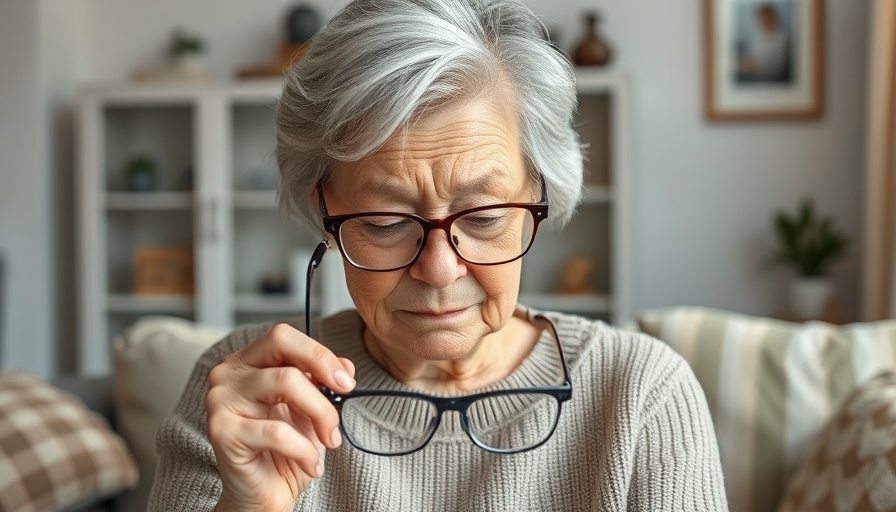
Understanding Dry Eye: A Common Yet Overlooked Condition
As we age, our bodies undergo a myriad of physical changes, and with those changes often comes a range of health conditions that can interfere with daily life. One such condition that frequently gets overlooked is chronic dry eye, affecting around 38 million Americans. A common ailment characterized by dryness, discomfort, and irritation, dry eye can manifest in ways many may attribute to aging alone. However, understanding the roots of this issue can empower individuals to take proactive steps toward improvement.
The Hidden Impact of Chronic Dry Eye
Chronic dry eye is not merely a nuisance; it can significantly impact quality of life, disrupting daily activities and causing a range of symptoms from blurry vision to burning sensations. This condition often arises from various factors, including prolonged screen time, use of contact lenses, hormonal fluctuations, and environmental variables. Interestingly, preexisting conditions such as autoimmune disorders and diabetes can also exacerbate dry eye symptoms due to systemic inflammation, which may be at the core of these debilitating sensations.
Inflammation: The Root Cause?
While many people experience occasional dry eyes, the persistent suffering characteristic of chronic dry eye likely points to inflammation as a driving force. In fact, research indicates that up to 65% of individuals with dry eye show signs of clinically significant inflammation. When the eye experiences continuous dryness, it can enter a damaging cycle - each blink causing friction and exacerbating inflammation, ultimately worsening the symptoms. Recognizing this cycle is the first step toward effective treatment.
Taking Control: Managing Symptoms Effectively
For those finding relief with over-the-counter (OTC) eye drops limited, the problem may lie in the fact that these drops only temporarily alleviate symptoms. They typically fail to address the underlying causes of dry eye, particularly inflammation. It’s essential for individuals to discuss their symptoms with a healthcare provider who may recommend prescription treatments, such as XIIDRA® (lifitegrast ophthalmic solution) 5%. Unlike regular eye drops, XIIDRA targets inflammation directly, providing long-lasting relief by treating the underlying issues associated with dry eye disease.
The Importance of Seeking Professional Guidance
Healthcare decisions can be daunting, especially for older adults navigating a landscape of new health challenges. However, addressing dry eye symptoms should not be put on the back burner. Engaging with an eye care professional can shed light on the most suitable courses of action tailored to each individual’s unique needs. From understanding the nuances of inflammation to exploring advanced treatment options, collaboration with healthcare providers is crucial. Don't hesitate to advocate for your health; saying, "This isn't normal" can be the catalyst for positive change.
Decisions and Next Steps for Well-Being
Being informed is a powerful tool for managing health conditions like chronic dry eye. Beyond discussing treatment options with a doctor, consider lifestyle adjustments that can improve eye health, such as reducing screen time, maintaining proper hydration, and using protective eyewear in dry conditions. Additionally, integrating nutrients beneficial for eye health, including omega-3 fatty acids, may bolster overall ocular well-being. Proactive steps and informed decision-making can greatly reduce the discomfort of dry eye symptoms.
Finding Support Amidst Change
For many, the challenge of chronic dry eye can feel isolating, yet it's important to remember that millions are navigating similar experiences. Recognizing and talking about these issues not only fosters community but also reflects the shared journey of aging with health matters. Sharing anecdotes and learning from the experiences of others can be therapeutic and insightful.
Final Thoughts: Embrace Proactive Health Management
Living with persistent dry eye can be frustrating, but understanding its causes and seeking appropriate treatment can transform your experience. As participants in our health journeys, let’s prioritize our well-being by remaining informed and advocate for our health. Whether through engaging with healthcare providers or making adjustments to our daily habits, taking charge of our eye health now can lead to a more comfortable, vibrant future.
Don't let dry eye symptoms stand in your way. Connect with your healthcare provider today to explore treatment options and feel empowered in your health journey.
 Add Row
Add Row 

 Add
Add 


Write A Comment